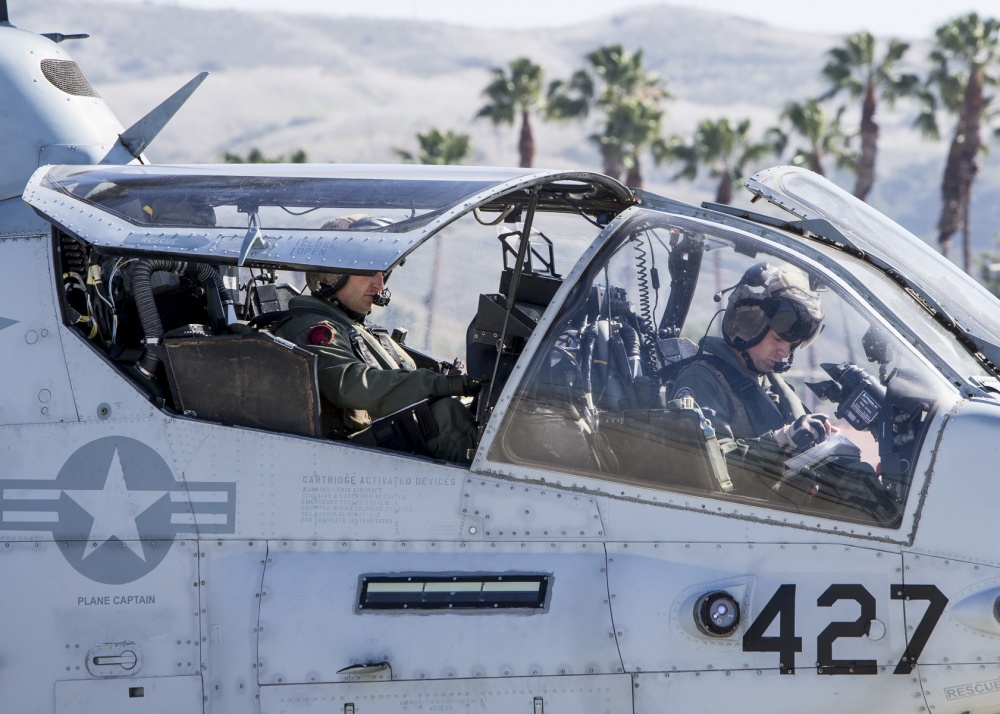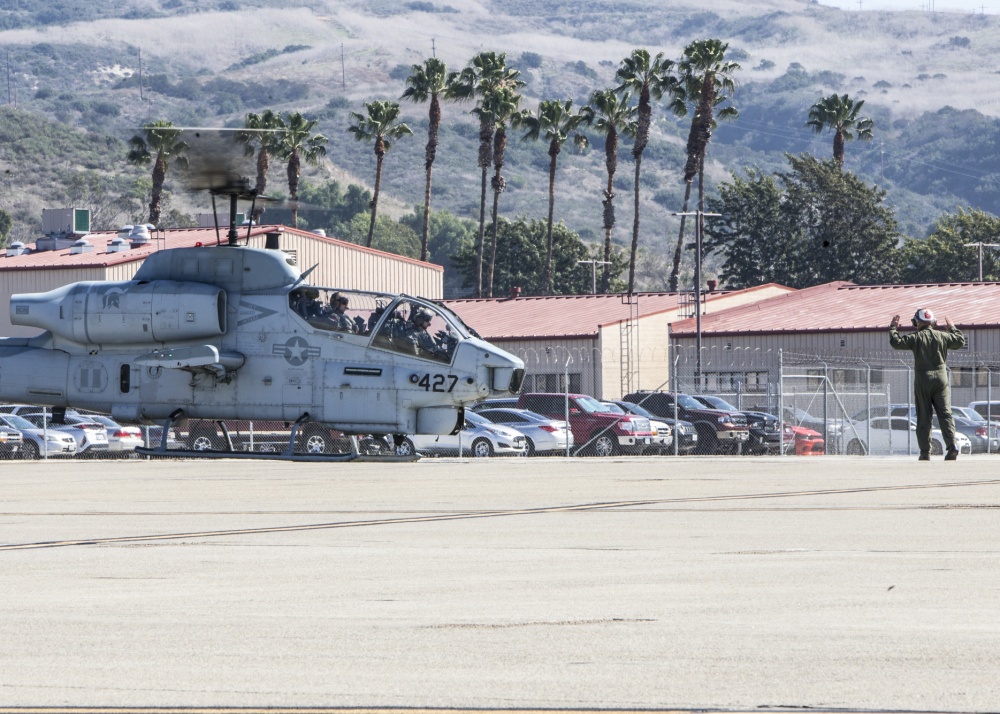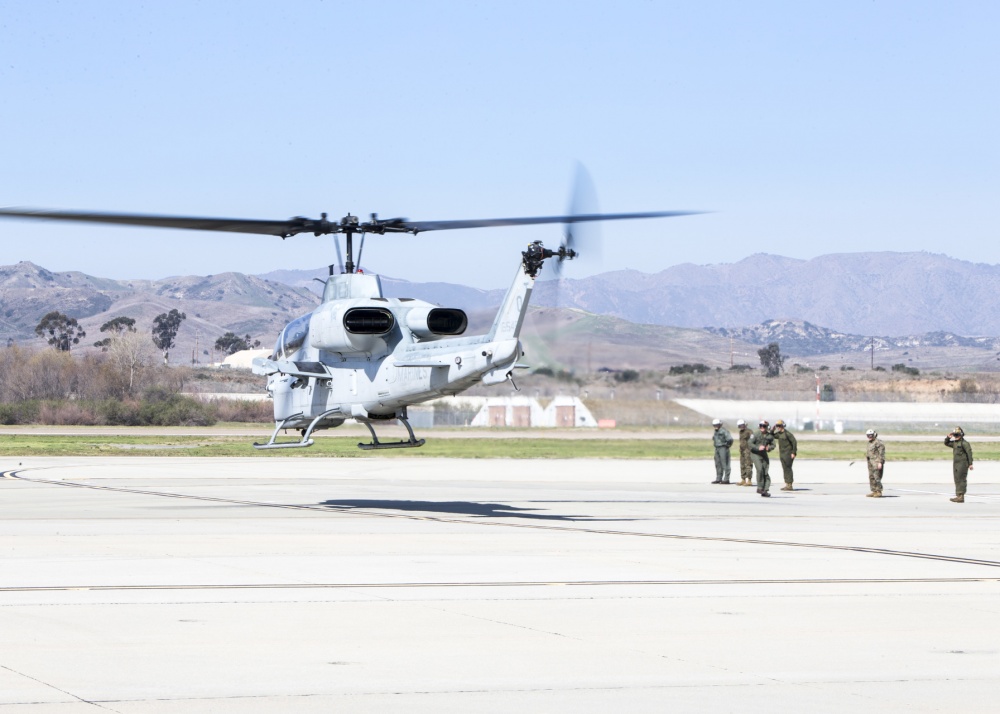“It’s been special flying the legacy AH-1Ws, and they definitely played a huge part in the Marine air-ground task force,” Capt. J. J. Pierce, HMLAT-303 adjutant and transitioned AH-1Z “Viper” pilot
The 3rd Marine Aircraft Wing (MAW) retired its last AH-1W on Feb. 6 with Capt. John T. Fischer and Capt. Daniel J. Houser (both with Marine Light Attack Helicopter Training Squadron (HMLAT) 303, Marine Aircraft Group (MAG) 39) flying the last Super Cobra to Davis-Monthan Air Force Base.
As explained by Master Sgt. Christine Polvorosa, Marine Corps Air Station Miramar / 3rd Marine Aircraft Wing, in the article Bittersweet farewell as last 3rd MAW Super Cobra, takes final flight, since its activation on April 30, 1982, HMLAT-303 has trained Cobra and Huey pilots for the Marine Corps and Navy in an extensive training syllabus including familiarization, navigation, ordnance, terrain, formation, instrument and night vision goggle flight.
While HMLAT-303 doesn’t deploy as a training squadron, the AH-1W has a long history of deploying with other HMLA squadrons in support of Operation Desert Storm, Operation Iraqi Freedom, Operation Enduring Freedom, and is currently still operational with MAG-29 on the East Coast.

“The majority of the Cobra instructor cadre at HMLAT-303 grew up with the AH-1W at their first squadron and deployed with it,” said Capt. J. J. Pierce, HMLAT-303 adjutant and transitioned AH-1Z “Viper” pilot. “Having known that the AH-1W was going to be phased out for a while now, the cadre is excited about the new capabilities with the AH-1Z and welcomes the change. It’s been special flying the legacy AH-1Ws, and they definitely played a huge part in the Marine air-ground task force.”
According to Capt. John T. Fischer, an AH-1Z Weapons and Tactics Instructor with HMLAT-303, the AH-1Z Viper has a significantly higher maximum gross weight due to the improved engines and four-bladed rotor system when compared to the AH-1W; meaning more power available. This increase in power available permits the AH-1Z to carry an increased ordnance payload to the fight.
The AH-1Z also has six stations on its wing pylons to carry ordnance and four on the AH-1W. Stations one & six are capable of carrying the AIM-9, an infrared-guided air-to-air missile, which provides the AH-1Z the capability to defend itself and other assault support platforms against an enemy aircraft.
Stations two through five are each capable of carrying one of the following: (19) x 2.75″ unguided rockets, (4) x AGM-114 Hellfire, (7) x 2.75″ Guided Rockets (APKWS—Advanced Precision Kill Weapon System), (1) x AIM-9, (1) x 77-Gallon Auxiliary Fuel Tank. When you combine the increase in speed with the increase in fuel (time on station), payload, and one of the best sensor systems on the battlefield, you get a much more effective platform for providing offensive air support, armed escort, and airborne supporting arms coordination than the AH-1W, explained Fischer.

“Additionally, there’s a digital ‘under the glass’ cockpit. It’s faster, carries more ordnance, and has 84 percent identical components with the UH-1Y (Huey), which makes maintenance processes more efficient. Approximately 30 minutes more endurance, or time on station, allowing more time to support the Marines on the ground,” added Pierce.
The Super Cobra has left a legacy as the Marine Corps’ primary attack helicopter, and in their 35-year history, the Marines and Sailors of HMLAT-303 have truly lived up to the charge directed by the commandant of the Marine Corps upon the squadron’s activation: “… that HMLAT-303 will provide the leadership and professional performance to set the new standards in aircrew training.”

Photo by Pfc. Juan Anaya Jr. / U.S. Marine Corps

